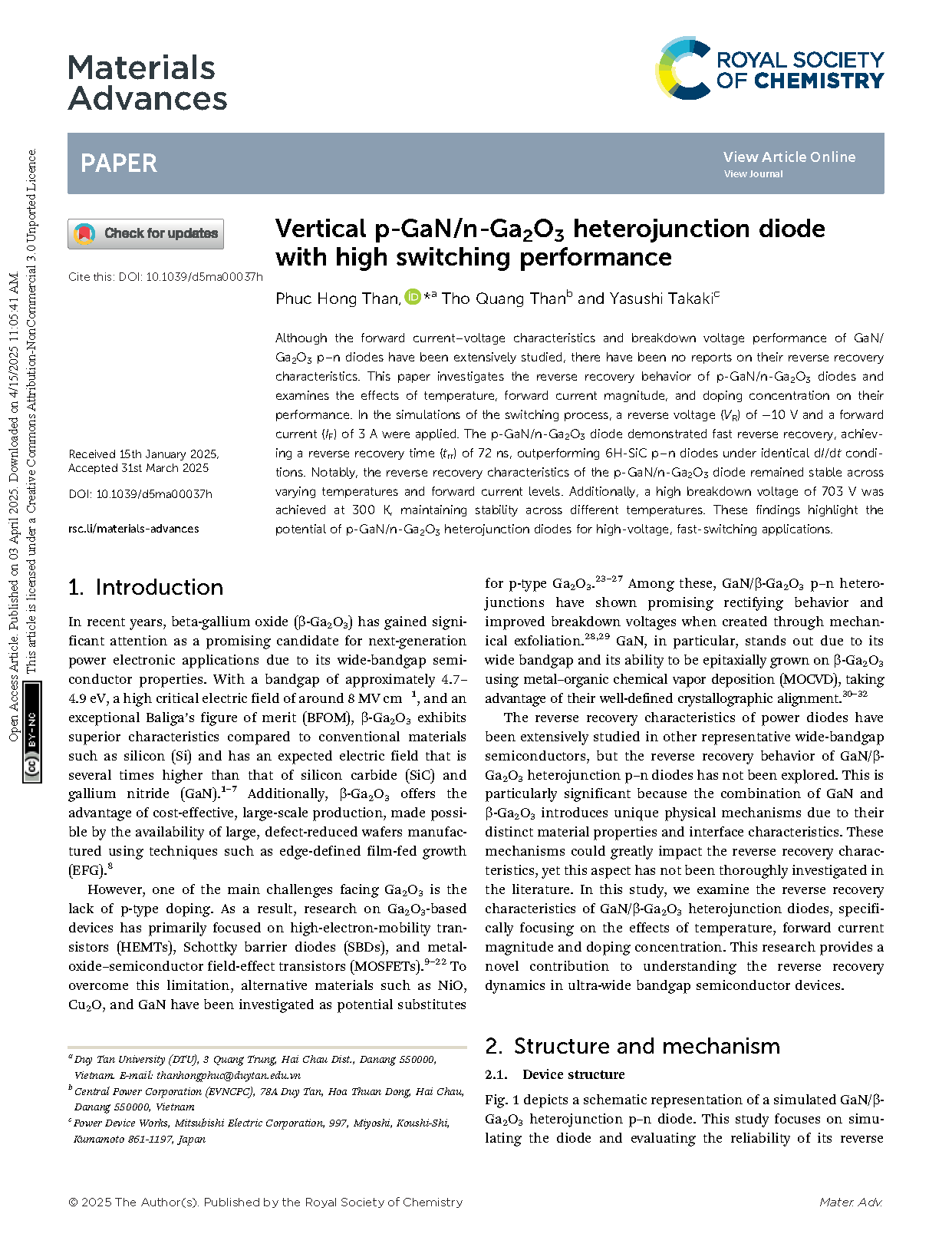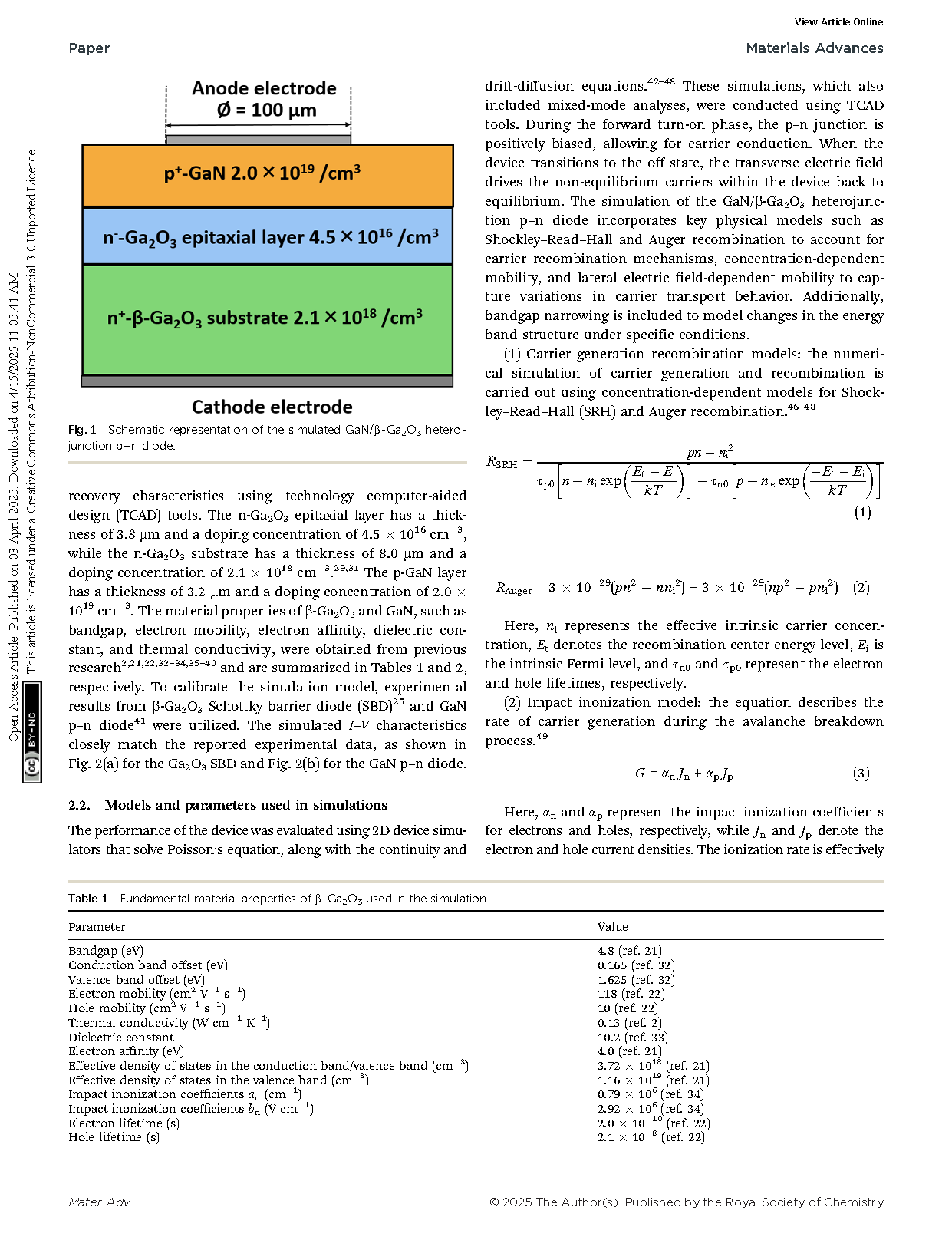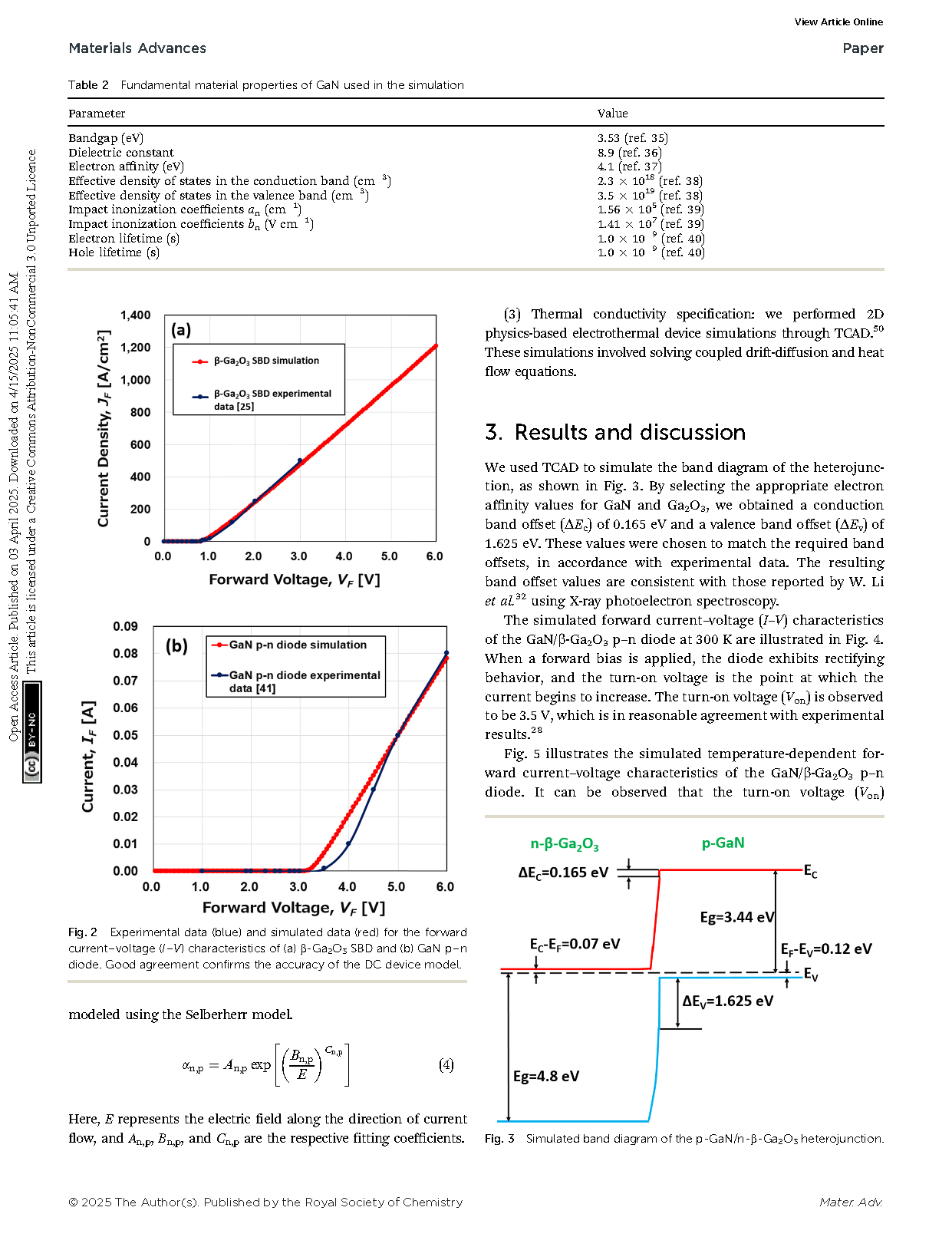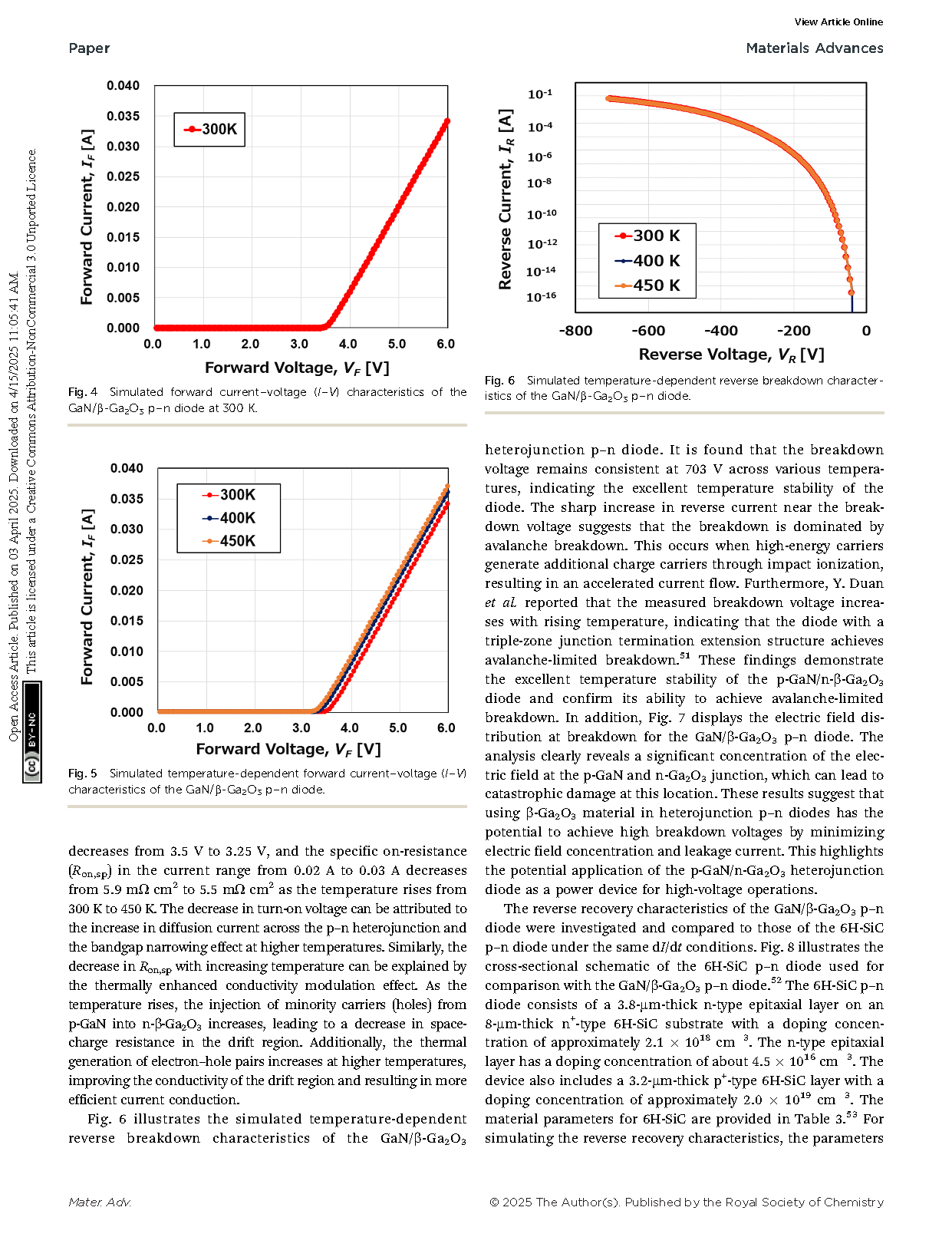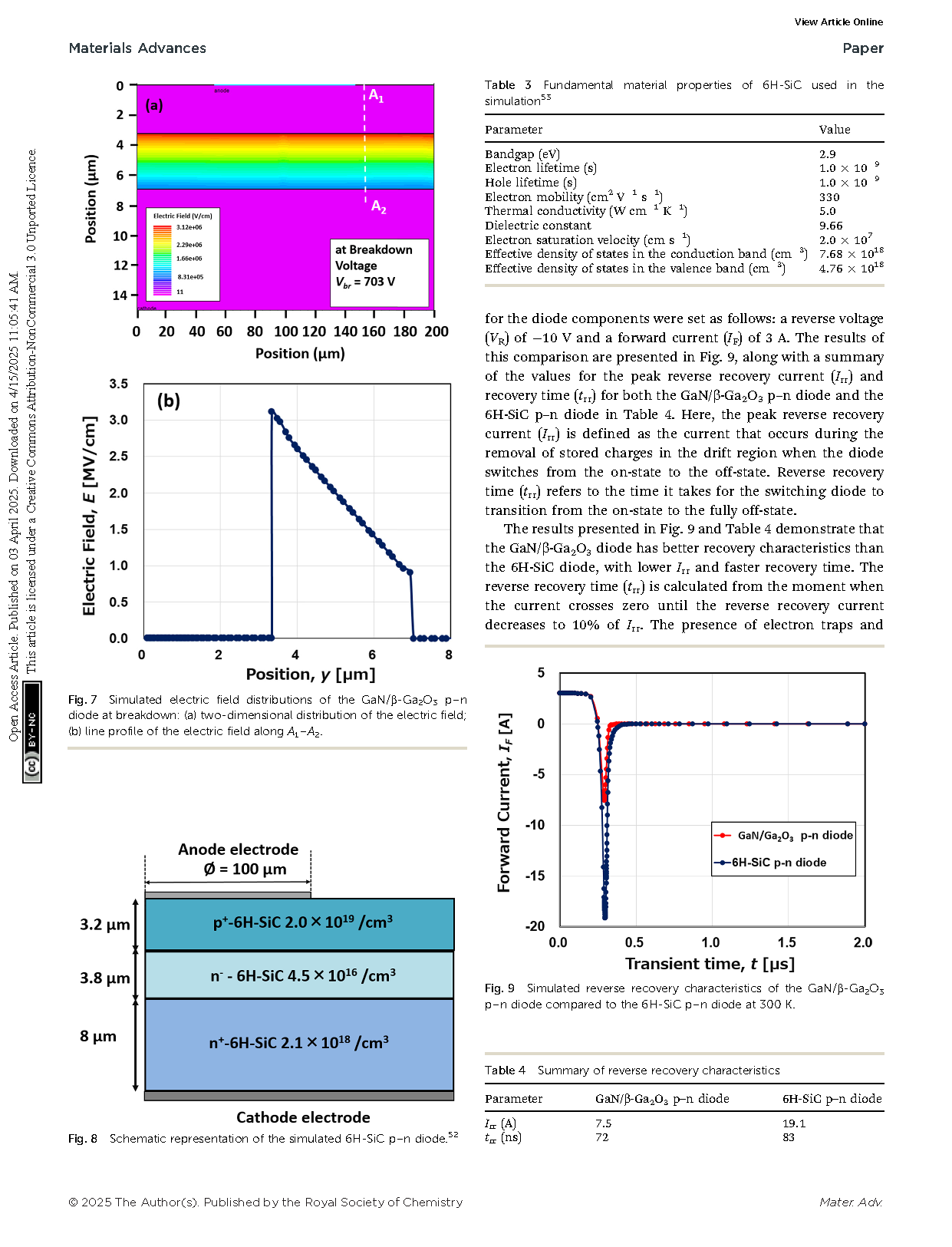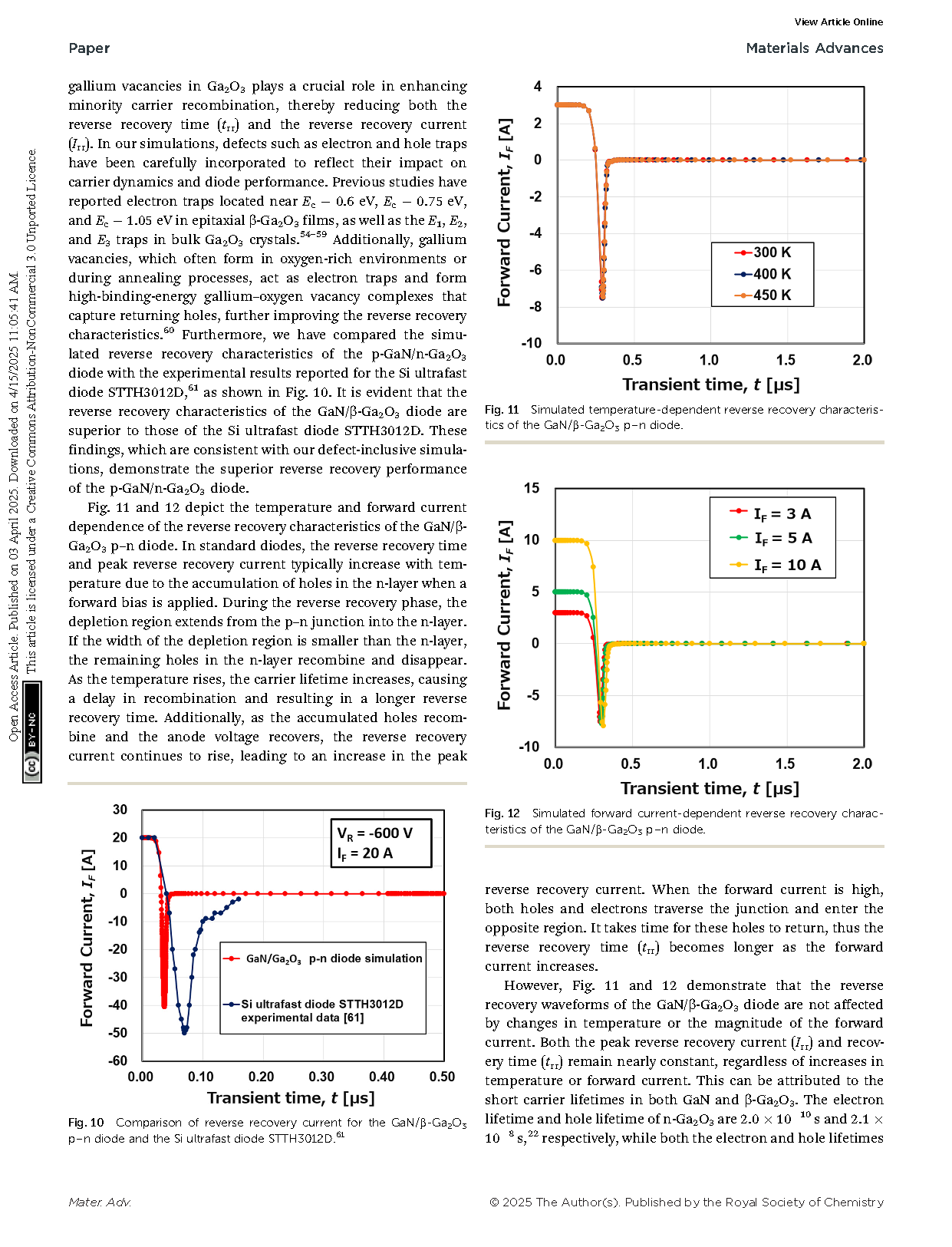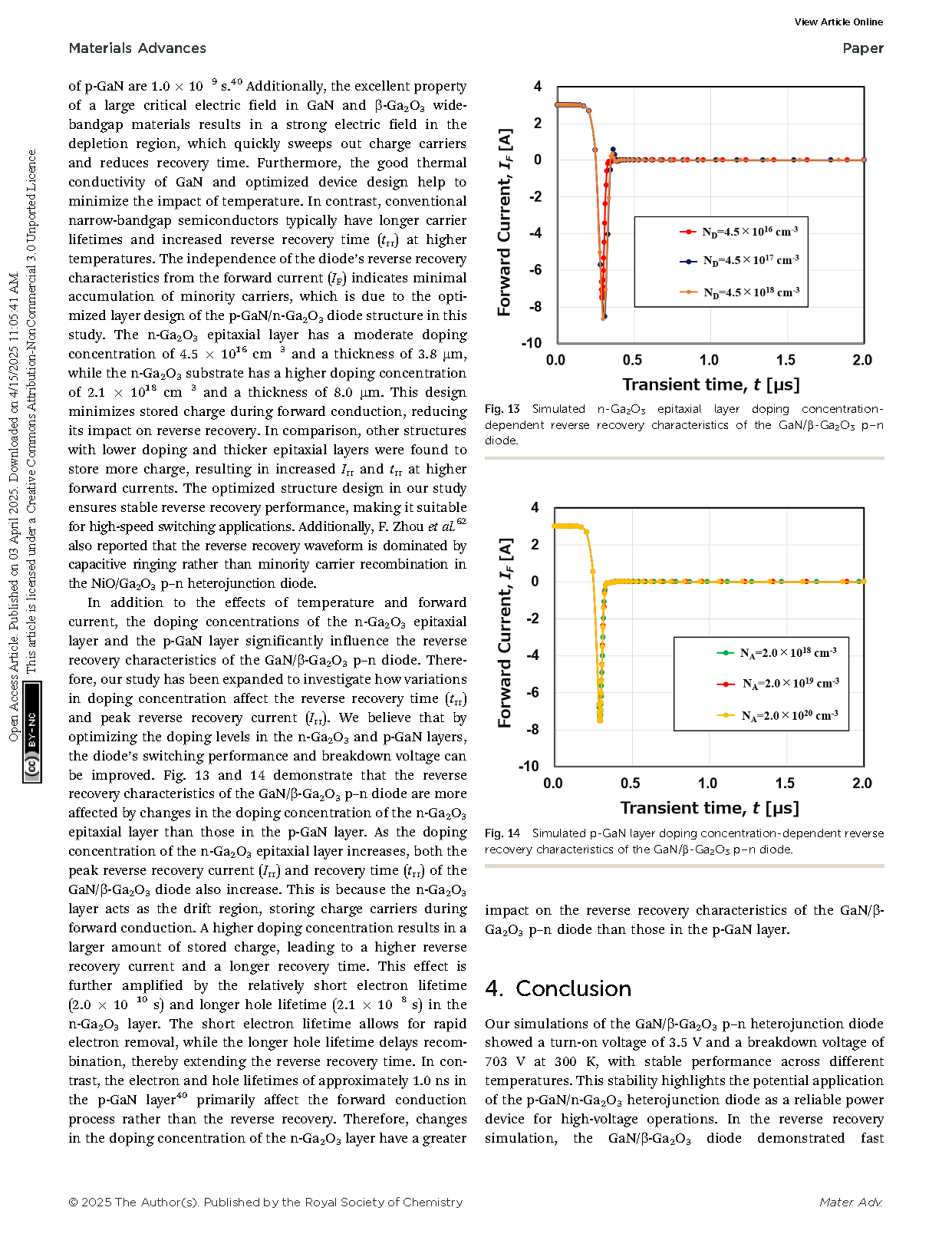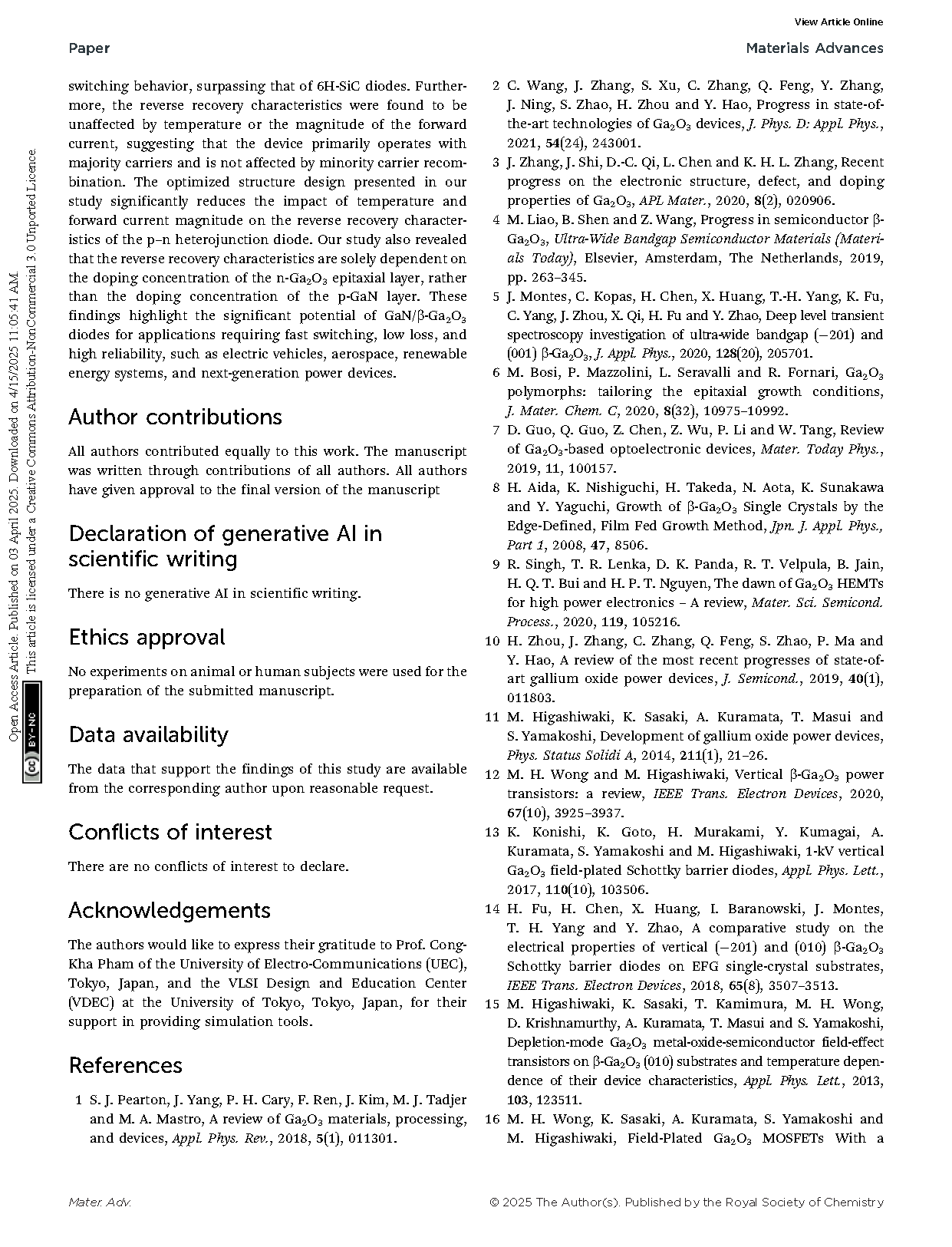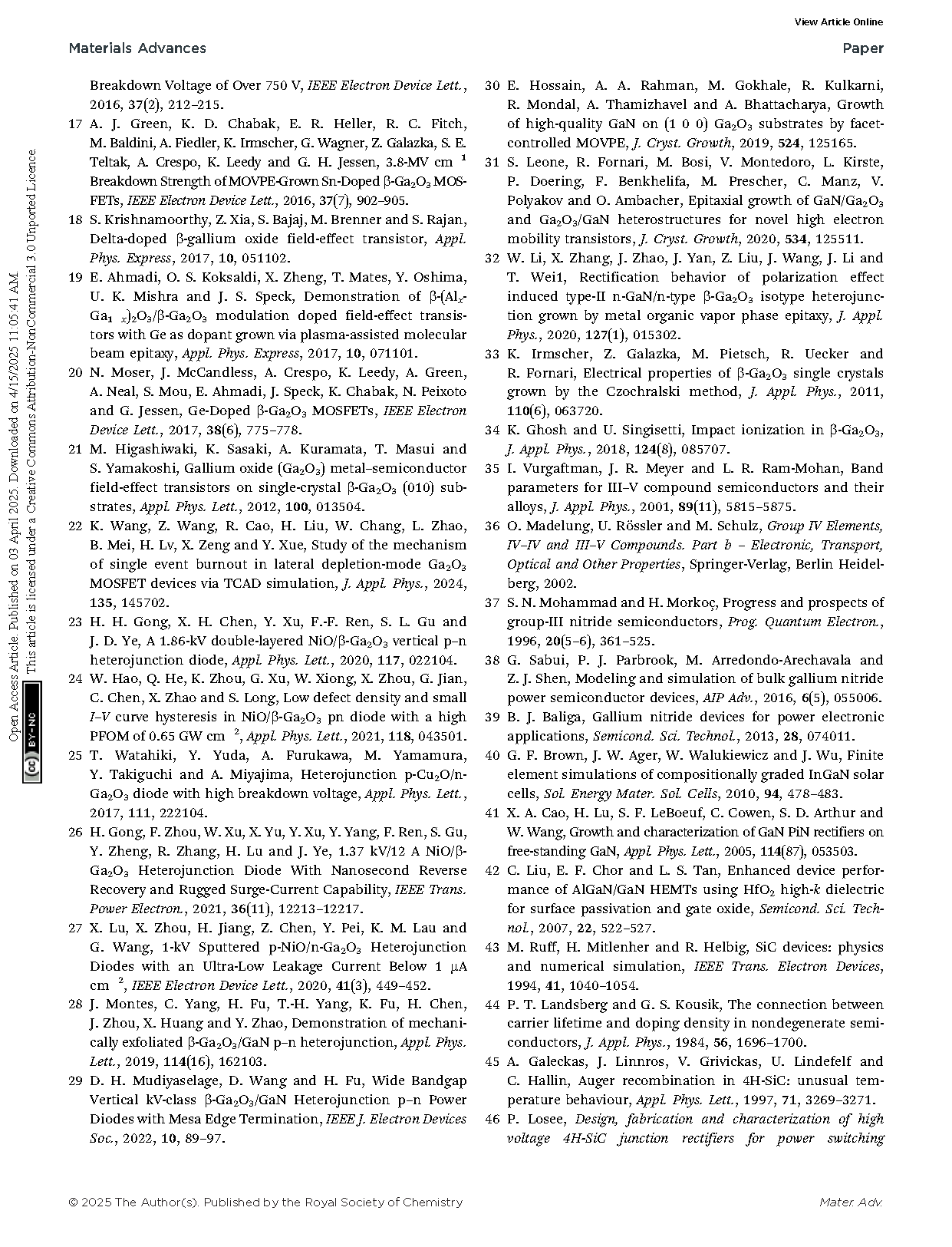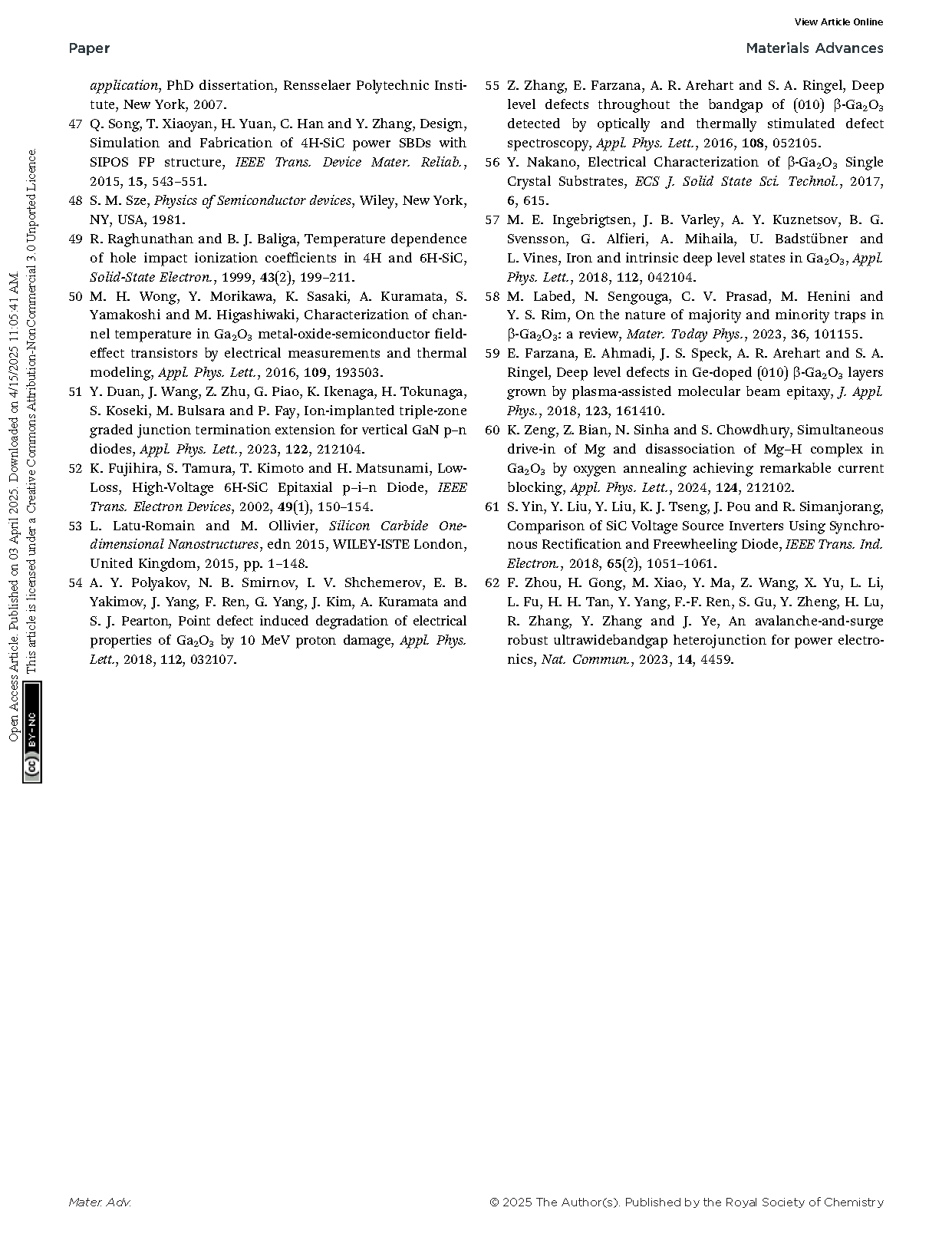
【International Papers】Vertical p-GaN/n-Ga₂O₃ heterojunction diode with high switching performance
日期:2025-05-22阅读:315
Researchers from the Duy Tan University have published a dissertation titled "Vertical p-GaN/n-Ga2O3 heterojunction diode with high switching performance" in Materials Advances.
Project support
The authors would like to express their gratitude to Prof. Cong-Kha Pham of the University of Electro-Communications (UEC), Tokyo, Japan, and the VLSI Design and Education Center (VDEC) at the University of Tokyo, Tokyo, Japan, for their support in providing simulation tools.
Background
In recent years, beta-gallium oxide (β-Ga2O3) has gained significant attention as a promising candidate for next-generation power electronic applications due to its wide-bandgap semiconductor properties. With a bandgap of approximately 4.7–4.9 eV, a high critical electric field of around 8 MV cm−1, and an exceptional Baliga's figure of merit (BFOM), β-Ga2O3 exhibits superior characteristics compared to conventional materials such as silicon (Si) and has an expected electric field that is several times higher than that of silicon carbide (SiC) and gallium nitride (GaN). Additionally, β-Ga2O3 offers the advantage of cost-effective, large-scale production, made possible by the availability of large, defect-reduced wafers manufactured using techniques such as edge-defined film-fed growth (EFG).
The reverse recovery characteristics of power diodes have been extensively studied in other representative wide-bandgap semiconductors, but the reverse recovery behavior of GaN/β-Ga2O3 heterojunction p–n diodes has not been explored. This is particularly significant because the combination of GaN and β-Ga2O3 introduces unique physical mechanisms due to their distinct material properties and interface characteristics. These mechanisms could greatly impact the reverse recovery characteristics, yet this aspect has not been thoroughly investigated in the literature. In this study, we examine the reverse recovery characteristics of GaN/β-Ga2O3 heterojunction diodes, specifically focusing on the effects of temperature, forward current magnitude and doping concentration. This research provides a novel contribution to understanding the reverse recovery dynamics in ultra-wide bandgap semiconductor devices.
Abstract
Although the forward current–voltage characteristics and breakdown voltage performance of GaN/Ga2O3 p–n diodes have been extensively studied, there have been no reports on their reverse recovery characteristics. This paper investigates the reverse recovery behavior of p-GaN/n-Ga2O3 diodes and examines the effects of temperature, forward current magnitude, and doping concentration on their performance. In the simulations of the switching process, a reverse voltage (VR) of −10 V and a forward current (IF) of 3 A were applied. The p-GaN/n-Ga2O3 diode demonstrated fast reverse recovery, achieving a reverse recovery time (trr) of 72 ns, outperforming 6H-SiC p–n diodes under identical dI/dt conditions. Notably, the reverse recovery characteristics of the p-GaN/n-Ga2O3 diode remained stable across varying temperatures and forward current levels. Additionally, a high breakdown voltage of 703 V was achieved at 300 K, maintaining stability across different temperatures. These findings highlight the potential of p-GaN/n-Ga2O3 heterojunction diodes for high-voltage, fast-switching applications.
Conclusion
Our simulations of the GaN/β-Ga2O3 p–n heterojunction diode showed a turn-on voltage of 3.5 V and a breakdown voltage of 703 V at 300 K, with stable performance across different temperatures. This stability highlights the potential application of the p-GaN/n-Ga2O3 heterojunction diode as a reliable power device for high-voltage operations. In the reverse recovery simulation, the GaN/β-Ga2O3 diode demonstrated fast switching behavior, surpassing that of 6H-SiC diodes. Furthermore, the reverse recovery characteristics were found to be unaffected by temperature or the magnitude of the forward current, suggesting that the device primarily operates with majority carriers and is not affected by minority carrier recombination. The optimized structure design presented in our study significantly reduces the impact of temperature and forward current magnitude on the reverse recovery characteristics of the p–n heterojunction diode. Our study also revealed that the reverse recovery characteristics are solely dependent on the doping concentration of the n-Ga2O3 epitaxial layer, rather than the doping concentration of the p-GaN layer. These findings highlight the significant potential of GaN/β-Ga2O3 diodes for applications requiring fast switching, low loss, and high reliability, such as electric vehicles, aerospace, renewable energy systems, and next-generation power devices.
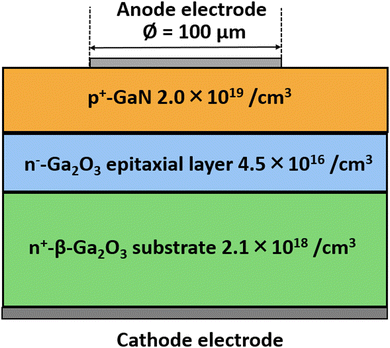
Fig. 1 Schematic representation of the simulated GaN/β-Ga2O3 heterojunction p–n diode.
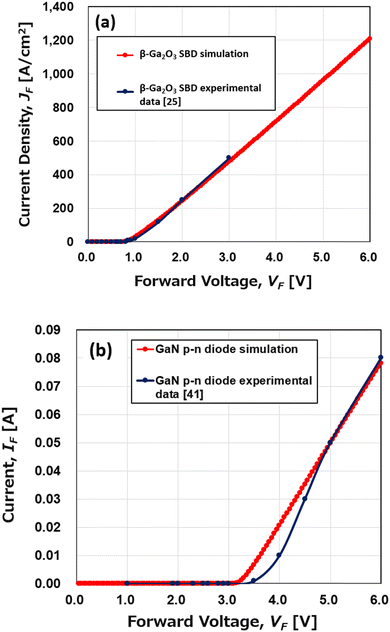
图 2 (a) β-Ga2O3 SBD 和 (b) GaN p-n 二极管正向电流-电压 (I-V) 特性的实验数据(蓝色)和模拟数据(红色)。良好的一致性证实了直流器件模型的准确性。
DOI:
doi.org/10.1039/D5MA00037H
